
Hi, I’m Dillon Ebbs and I’m in 6th Class. Every year, St. Peter’s BNS participates in the BT Young Scientist Competition. Most people don’t know this, but the BT Young Scientist has a primary section called the ‘Primary Science Fair’. We have entered this for many years and our projects have been about many things including a study on lifeboats, the physics of the Funfair and how chocolate is made.
This year’s project was called ‘The Science behind Illusions’ and Ms. Sexton’s 6th Class spent a long time working on it to prepare for the exhibition.
We went to the exhibition in the RDS on Saturday, 12th January. It was so exciting to see all of the projects and meet other young people.
The judge said our project was very exciting and that our explanations were very good. He also said he liked our descriptions and how we spoke to the public when they came to visit our stand.
This picture shows the five boys who represented our class with our teacher, Ms Sexton, and the judge who presented us with our prize. We prepared our project by carrying out a number of experiments and writing up our findings. The following pages describe how we prepared the project and also what we discovered along the way. We divided our experiments under three categories – senses; light, heat, water and air pressure; and motion, inertia and gravity.
Senses
The Phantom Coin
The phantom coin works because the nerve endings in your head feel the coin and don’t feel it when you take it away. You demonstrate the trick first and then tell your volunteer to try get the coin off their forehead without touching it. It worked really well on me because I thought the coin was still there. – Jamie
A hole in the hand
You roll up paper and look through it, then open both eyes and put your hand beside it. It looks like there is a hole in your hand. Light enters both your eyes and these signals are translated in your brain into the things you see. Because the image from each eye is slightly different, your brain makes sense of it for you. In this case, it looks as though there’s a hole in your hand. I tried it with a ruler and it and it worked. – Adam
Floating Arms
Pull at your pockets with both hands for as long and as hard as you can. When you let go, your hands will float up by themselves. This trick works because some muscles are tensing and when you let go, they relax. Luke
Imaginary Ball
Your partner pushes against your hands as hard as they can. You push out at the same time. When they let go, it feels like you have an imaginary ball. This works because your muscles tense and relax, like in Floating Arms. Pearse and I showed the class – Blaise
Winding Fingers
This is another partner trick relying on your muscles releasing energy. Jamie showed us this one. Your partner taps your fingers and they seem to close by themselves.
Lee
Magnetising Pencils
You get two pencils and push them together as hard as you can. When you pull them apart, they seem to be drawn together as if there is a magnet in them. This is another trick that uses your muscles, but the only difference is that it relies on objects rather than parts of the body. I tried it with Jake as a partner trick and we held one pencil each and it still worked. This was my favourite illusion. –
Ryan
Multiplying Marbles
You ask your volunteer to cross their middle and index fingers. You ask them to close their eyes and ask them to guess how many marbles are in your hand. It confuses the nerve endings and makes you think that there are more marbles there than there actually are. Jake
These are our booklets. We used these to write up the experiments and to help us to explain the experiments at the Primary Science Fair. We included information on how they worked and we drew pictures to help explain.
Chris
LIGHT, HEAT, WATER AND AIR PRESSURE
Super cool water
Put a bottle of sparkling water in the freezer and leave it there for a few hours. Take it out and open the lid. The water will instantly freeze. Fizzy water contains carbon dioxide and a little bit of salt. This means that it freezes at lower temperature. When the lid is opened, the carbon dioxide is expelled, causing the water to freeze – Jamie
The Gorilla Effect
This was not our best trick. You rub your finger on the soap and scatter the pepper over the bowl of water. Put your finger in the water and watch all the black pepper rush to the other end of the bowl. We could not find black pepper so we used nutmeg. It did not work perfectly but it worked a bit. The soap upsets the water molecules causing the pepper to move away – Tautvydas
Potato Skewer
You have to try get the straw through the potato. Some of us worked it out by ourselves. If you cover the top of the straw, it traps the air molecules and gives the straw extra strength. If you do not cover the straw it will not work – Pearse
So Long Suckers
Pour the water onto a plate and put coins in a pile. Light two or three matches at once and lay them down, still burning, on top of the pile of coins. Quickly put the glass over the matches. As the matches burn, the water gets sucked up into the glass. The heat of the flame increases the water pressure in the glass, forcing air out. The flame goes out when all the oxygen is used up and the water is sucked into the glass. We tried it first and you could not see it clearly so we added some food colouring. It was really impressive.
This was the most popular illusion – we repeated it for every class in the school but we had to warn them not to try it at home. We were not allowed to light matches in the RDS so we made a little video to explain how it worked. We did the same with the ‘Fire Extinguisher illusion.
Fire Extinguisher
Light the candles. Pour the vinegar into the jug and add the bicarbonate of soda. It starts to fizz and then when you hold it over the candles, the candles go out. This is because the mixture reduces the oxygen in the air around the candles. The candles need oxygen to burn, reducing the oxygen will cause the candle to go out.
Jake
Bending Light
Fill a bottle with water. Punch a hole in the bottle about a quarter up from the bottom. Shine a light through the bottle opposite the hole. The light seems to bend because the light travels along the path of least resistance and as the light is reflected off the water – Blaise
MOTION, INERTIA AND GRAVITY
Cola Can-Can
Fill the can with 100ml of water and tilt it on its side at a 45degree angle. It will balance by itself. This is just a simple trick of physics. I knew how to do this one already so I showed everyone. It does not have to be exactly 100ml so I usually do it with a third of the can – Lee
Wood-snapping paper
Put the ruler on the table with about 40 % of it over the edge. Place the newspaper on the table covering the ruler. Crash your hand down on the ruler. It will break in half. This trick works because of air pressure. The sheet of newspaper on top of the ruler is being pushed down by air, holding the ruler on the table, allowing the force to break the ruler. This actually worked when we hit the ruler cleanly – Nathan
Coin snatching
Put a coin flat on your elbow. Bring your elbow down sharply, your hand will follow and the coin will hang in the air long enough for your to grab it. This is because the coin, thanks to inertia, resists gravity for long enough for you to catch it. We were very good at this trick – Tautvydas
Frustrating papers
Tear a piece of paper in almost three parts and try to pull it apart so all three parts separate. It is impossible until you use tape to attach 50c to the top of B. Attaching the coin increases the inertia enough to cause the paper to break in both spots. This was a tough one to get. Only a few people managed it – Ryan
Living on the edge
Interlock the prongs of the fork. Balance the central point between the two forks using a toothpick. Balance the toothpick on the edge of the glass and then let go. This is all about the centre of gravity. Our Learning Support teacher helped us with this – Junior
Pool hustling scam
This involved placing a nail in the middle of three pool balls. Depending on how you set it up, you should be able to knock over the nail, but when you set it up slightly differently, your partner will not. This trick was all about momentum. We found it difficult to make work – Luke
Tablecloth trick
Hold the edges of the tablecloth really tightly, Pull the cloth away and everything should stay on the table. This is inertia as well. We found this really hard to manage but we decided that if you had a more slippery tablecloth, it might work better – Blaise
Magic Straw
Pick up a straw, wrap it in your jumper and with a sharp motion pull the straw through it. Then place it on the bottle, put your hands near the straw and it will start to move away from your hands. The static electricity and the difference in the charge between the straw and the hand makes the straw move – Cian
OPTICAL ILLUSIONS
As part of our study into illusions, we also considered how optical illusions can trick our brain into thinking that we are seeing something different. We researched different types of illusions and then made a few of our own. This is our 3D hand. We drew around our hands using pencil and then drew straight lines using different colour markers, curving the line when it came to our pencil marks. This example belongs to Adam.
Anamorphic Art
Anamorphic Art needs perspective to be seen properly. It is most commonly used on football or rugby pitches to highlight the logo of the sponsor. We decided to make our own anamorphic letters by adapting a tutorial we found online. First we drew a grid on a large piece of paper, using our camera as the point of perspective. If you were looking through the viewfinder, it looked like an even grid, but the lines actually sloped outwards. Next we printed an A4 version of the letter we wanted to draw. We drew a grid over that letter and used this as a guide to draw onto the anamorphic grid template. Then we tidied up the lines with rulers and painted inside the lines.
The day of the Primary Science Fair
On the day, five of the boys travelled to the RDS to take part in the Fair. We set up really early and we had lots of experiments out on the table to show people. Lots of people came over to our stand and we were a bit nervous demonstrating and explaining at first but after a bit of practice, we stopped caring! By the time the judge came around to talk to us, we were all happy explaining our project and in the end, we showed him nearly every experiment on the stand. He was really impressed by the project and by how well we explained everything. We also got to go to a special 3D show on space and we got to see all the other stands in there. It was a really good day out.


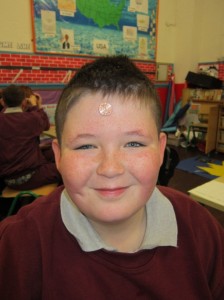
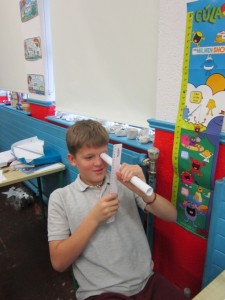
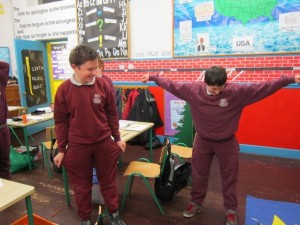
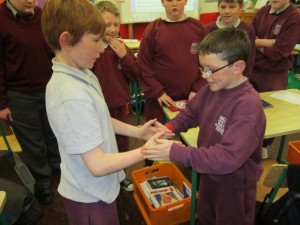
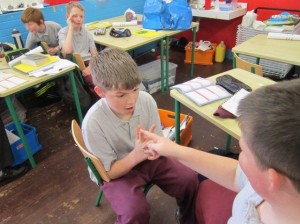
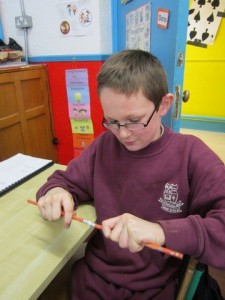
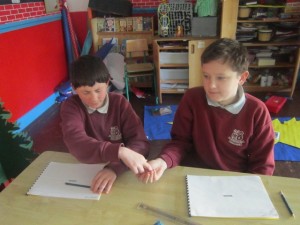
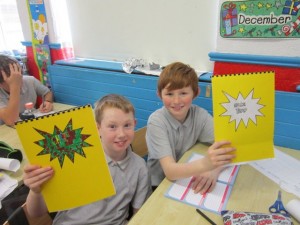
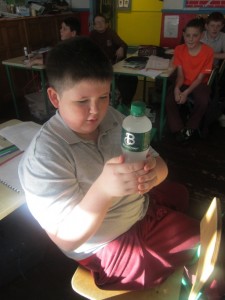
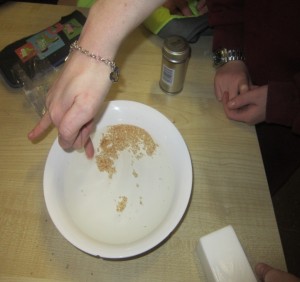
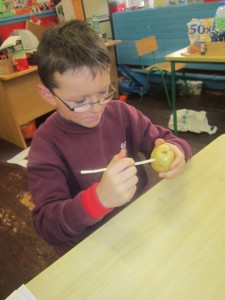
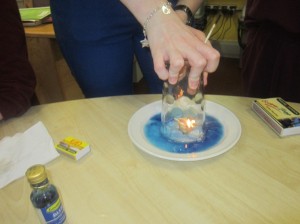
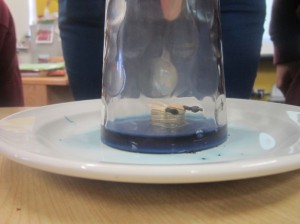
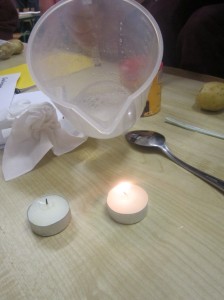
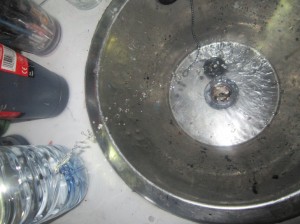
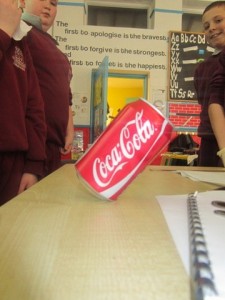
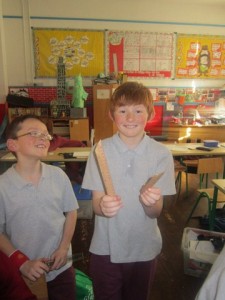
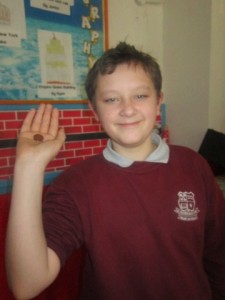
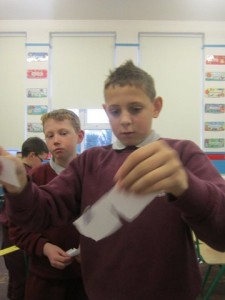
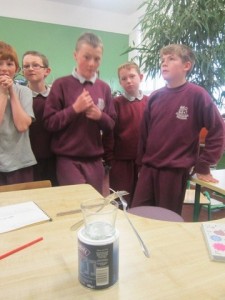
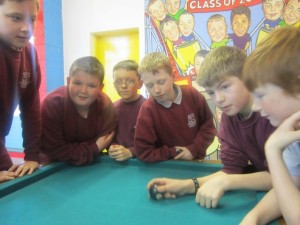
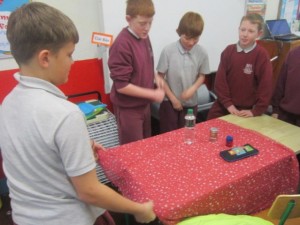
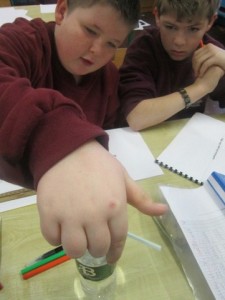
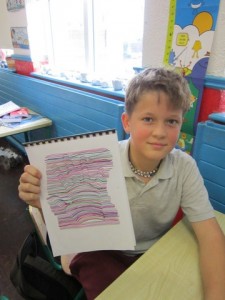
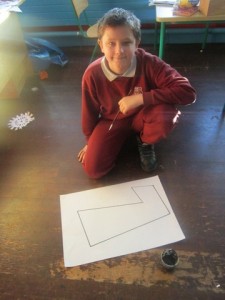
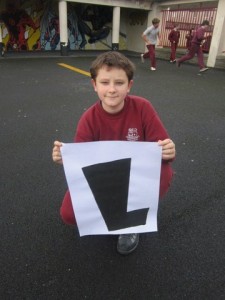
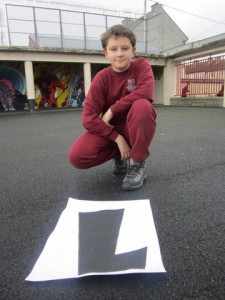









6:42 pm on February 23rd, 2013
Well done to Ms. Sexton’s class for putting together such a marvellous project.
8:10 pm on April 16th, 2013
Well done boys and of course Ms.Sexton. Congratulations to all, it sounds like you had a great time at the BT Young Scientists. Keep up the good work.
9:50 pm on April 25th, 2013
Great experiments boys. Did you use fishing wire to balance the can of coke like that? Go on you can tell me.
9:25 pm on April 29th, 2013
Sir they didn’t use fishing wire. haha !!! 😉